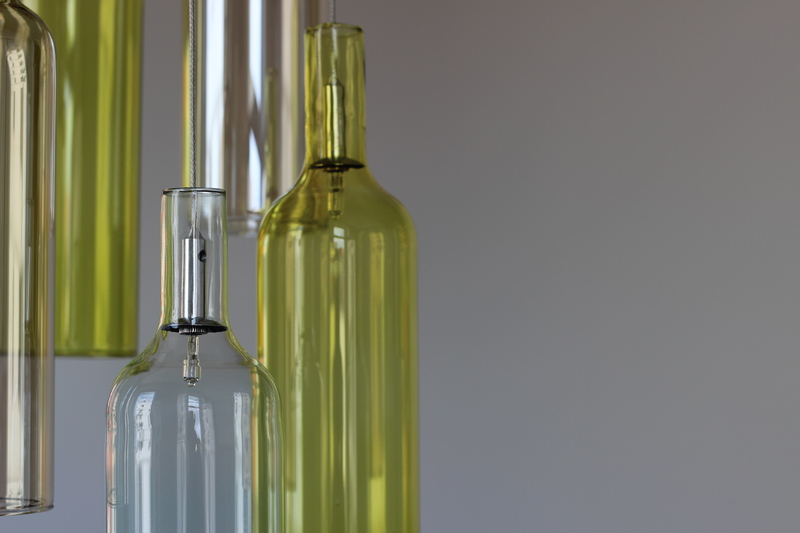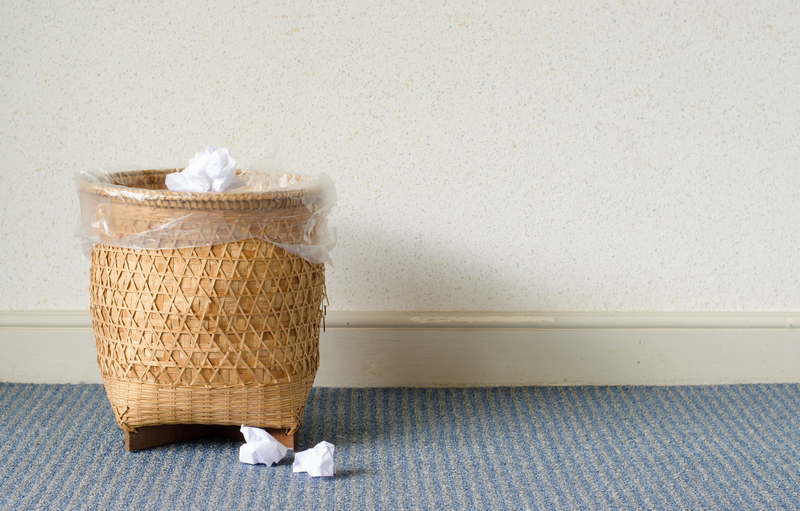From Kitchen to Recycling Bin: The Journey of Pots and Pans
Have you ever wondered where your old, scorched casserole dish or battered skillet ends up? The story of kitchen cookware isn't just about its time on the stove--it's a journey marked by innovation, everyday memories, and the growing importance of sustainability. This comprehensive guide takes you deep into the lifecycle of pots and pans, from their creation to their ultimate fate in the recycling bin, highlighting how you can make eco-friendly choices every step of the way.
The Evolution of Pots and Pans: From Ancient Times to Modern Kitchens
Pots and pans have been kitchen staples for thousands of years. Archaeological sites reveal early versions made from clay, bronze, and later, iron. Over time, cookware has evolved, mirroring advancements in materials science and culinary technique.
Traditional Materials Through the Ages
- Clay: Earthenware pots date back to prehistoric times, prized for their ability to retain moisture and heat.
- Copper and Bronze: These metals offered improved heat distribution--essential for consistent cooking--though copper is less popular today due to maintenance.
- Cast Iron: Introduced centuries ago, valued for superior heat retention, still beloved for its durability and flavor-enhancing qualities.
- Stainless Steel and Aluminum: Dominate modern kitchens, offering lightweight convenience and corrosion resistance.
The legacy of these materials shapes how we use--and eventually recycle--kitchen cookware today.

How Long Do Pots and Pans Last? The Typical Life Cycle of Cookware
The lifespan of pots and pans depends heavily on the material, frequency of use, and care. For instance, nonstick pans often degrade within 3-5 years due to coating wear, while cast iron might last generations if properly seasoned.
Factors influencing longevity include:
- Material Quality
- Usage Habits--frequent cooking, exposure to high heat, and abrasive cleaning methods can accelerate deterioration.
- Type of Food Prepared
- Care and Maintenance--proper cleaning and storage extend a pan's usefulness.
Eventually, all cookware reaches the end of its useful life and faces disposal dilemmas. What happens next?
The Environmental Impact: Why Proper Pots and Pans Disposal Matters
When old pots and pans are tossed in the trash, they're likely destined for landfill--contributing to metal waste and hurting the environment. Reusing and recycling cookware can help lower carbon footprints and save precious resources.
Key Environmental Concerns
- Non-biodegradable Metals: Aluminum and stainless steel may take centuries to break down.
- Chemical Coatings: Nonstick coatings often contain PTFE or PFOA, raising health and environmental concerns if incinerated or dumped.
- Resource Intensive Manufacturing: Creating new cookware uses significant amounts of energy and water.
Recycling pots and pans reduces landfill overload and recovers valuable metals for re-use--a win-win for your kitchen and the planet!
What Are Pots and Pans Made Of? Understanding Recycling Potential
The recycling journey of your kitchen utensils depends on their composition. Each material requires different handling and offers various opportunities for eco-friendly disposal.
Common Cookware Materials & Their Fate
- Stainless Steel: 100% recyclable. Commonly accepted at scrap metal yards and many recycling centers.
- Aluminum: Highly recyclable, but may need to be separated from non-metal parts like handles or lids.
- Cast Iron: Durable and sought-after for scrap. Alternatively, can be restored and reused indefinitely.
- Nonstick and Enamel-Coated: Trickier to recycle due to their coatings, which must be removed in specialized facilities.
Handles, Lids, and Mixed Materials
Many pots and pans include plastic, wood, or rubber grips. These parts are generally not recyclable with metals and may need to be detached before recycling the main vessel.
Step-by-Step: How to Recycle Pots and Pans Responsibly
1. Assess Condition for Reuse or Donation
- Is the item still usable but no longer needed? Donate to shelters, thrift stores, or community kitchens.
- Heavily damaged or worn beyond saving? Time to recycle.
2. Separate Components
- Remove any non-metal handles, knobs, or decorative parts.
- Detach glass lids or silicone grips for proper sorting.
3. Locate Appropriate Disposal or Recycling Center
- Scrap Metal Yards: Most accept pure metal pots and pans, regardless of condition.
- Municipal Recycling Programs: Some curbside programs take metal cookware; others require drop-off.
- Specialty Recycling Facilities: Equip to process nonstick or coated cookware--check local listings.
Pro Tip: Never Put Cookware in the Regular Recycling Bin Unless Accepted!
Standard recycling facilities may jam or damage equipment if they're not set up for metals beyond aluminum cans. Verify with your local recycler beforehand.
Creative Reuse: Giving Old Pots and Pans a Second Life
Not ready to say goodbye to your favorite skillet or saucepan? With a touch of imagination, old cookware can become unique decor or functional household items.
Upcycling Ideas for Pots and Pans
- Planters: Add drainage holes and a fresh coat of paint for chic indoor or outdoor planters.
- Bird Feeders: Hang an old frying pan from a tree for a whimsical feeder.
- Wall Art: Gives your kitchen or garden rustic charm--especially with vintage enamel cookware.
- Holders and Organizers: Flip a deep pot into a utensil holder or storage bucket.
- Clock Backs: Repurpose a round pan as a quirky clock or chalkboard.
Pots and Pans in the Circular Economy
Recycling cookware is a textbook example of the circular economy--minimizing waste and reprocessing old goods into new resources. By choosing cookware made from recyclable or sustainable materials and disposing of them thoughtfully, consumers help close the loop.
Brand Initiatives and Take-Back Schemes
- Brands Like Calphalon, GreenPan, and Tefal periodically offer "take-back" programs for used cookware.
- Some stores, such as Sur La Table and Williams Sonoma, accept old pots and pans during special recycling drives.
Check with your purchase brands--many are introducing schemes to cut waste and encourage recycling of kitchen items.
Smart Buying: Choosing Eco-Friendly Pots and Pans for the Future
The journey of your cookware is shaped by the choices you make when purchasing new items. Here's how to support sustainability from the start:
What to Look For in Sustainable Cookware
- Recycled Content: Select pans made from post-consumer or recycled metals.
- Longevity: Opt for brands known for durability and extendable lifespans.
- Repairable Designs: Some manufacturers offer replacement handles and parts rather than whole-pan replacements.
- Minimal Coatings: Choose uncoated or ceramic-coated cookware for easier recycling at end of life.
- Responsibly Sourced Packaging: Reduce plastic waste by supporting companies using minimal, eco-friendly packaging.
Long Life Tips for Pots and Pans
- Hand Wash Where Possible: Especially for nonstick and enameled pans, which degrade more quickly with dishwasher use.
- Season Cast Iron Regularly: Maintains its nonstick qualities and prevents rust.
- Use the Right Utensils: Avoid scouring or scratching surfaces--use wooden or silicone tools.

Frequently Asked Questions about Recycling Kitchenware
Can all pots and pans be recycled?
Most metal cookware--like stainless steel, cast iron, and aluminum--can be recycled. However, items with nonstick, enamel, or plastic coatings may require specialty recycling services. Always check with your local recycling provider for guidance.
Are there any health or safety concerns when disposing of old pans?
If your pans are coated with PFOA-based nonstick or are heavily rusted, handle with gloves and never burn or incinerate cookware. Take them to a recognized recycling or hazardous waste facility instead.
What's the best way to extend the life of my cookware?
- Use gentle cleaning methods and avoid high heat unless necessary.
- Repair or restore damaged pans--cast iron can often be re-seasoned and resurrected.
- Store properly to prevent warping or scratches.
Conclusion: Every Pan Has a Purpose--Even After the Kitchen
The journey of pots and pans doesn't end when they leave your stovetop. By understanding the full lifecycle--from manufacturing and everyday use to responsible recycling and creative reuse--you can make informed, eco-friendly decisions every step of the way. Whether you're donating gently used cookware, upcycling worn kitchenware, or bringing old pans to a recycling center, you're investing in a cleaner, greener world for future generations. And when it's time to buy new, let sustainability guide your choices--because every kitchen has a role to play in closing the loop.
Ready to make a difference from your kitchen to the recycling bin? Start today, and let your cookware's journey inspire a more sustainable home and planet.
